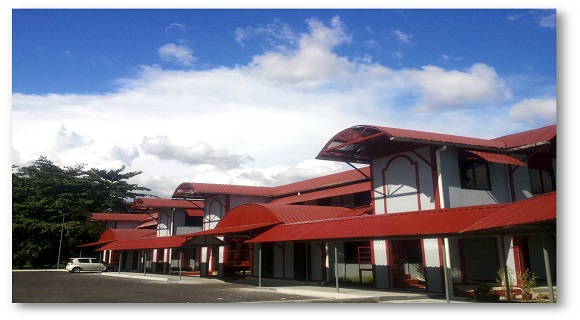
Year of Establishment
The Unit of Environmental Forensics was established on the 1st of September 2008.
Background
In the last few decades, Malaysia has experienced rapid industrial development. The rapid development had lead to various problems in relevance to environmental pollution caused by industrial and agricultural waste, urban waste, domestic sewage, runoff from urban area, landfill site, pharmaceutical waste from hospital and health centres including antibiotics and oil-based residues from motor vehicles. The waste consists of chemical or complex organic compounds that are generated through industrial processes. Organic waste does not only pose a threat to natural resources and human health; but also are harmful on the environment. All these compounds are collectively known as micro-organic pollutant. These compounds are known as micro-organic pollutants. Environmental pollutants include hydrocarbon, raw sewage, treated sewage, faeces, polychlorinated biphenyl (PCB), pesticide, nutrient, heavy metal, pharmaceuticals, and etc.
The existence of organic chemicals is alarming because a huge portion of xenobiotic chemicals (man-made chemicals) which are generated and released into the environment; are proven to exert carcinogenic and mutagenic properties on mammals. Recently, these chemical has been reported to disrupt human endocrine system and having the constricted capacity to mimic endocrine hormones as well as their functions.
Malaysia should find ways to categorize the chemical organic waste released into environment. Such classification should include their fate determination, distribution, dispersion, sources and transport pathway in environmental medium such as air, water, biota, sediment and earth. Since the introduction and implementation of the Environmental Quality Act (EQA) 1974, Malaysia has managed its main pollution sources effectively. The water quality for the overall country has improved by the diligent monitoring conducted by relevant agencies such as DOE.
Nonetheless, there another element of pollution more particularly termed as non-point source pollution which lacks attention nationally. Non-point source pollution is caused by a variety of sources and is diffused widely. As such, characterization of non-point pollution has been challenging. However, the set up of the environmental forensic field, a basic of modern geochemical organic which uses equipment and latest techniques has enabled forensic chemist to identify any chemical released on the environment in using molecular marker approach.
Those characteristics shared by all molecular markers shows that their structure are closely related to their designated source. Therefore, specific observation of a single compound in the environment will inevitably lead us to a specific compound source. In principle, when several markers have been discovered, as a result, other sources from various origins can be determined. This case is very crucial as it allows us to make estimation of sources of pollutant from a large pool of inputs of various origins (non-point source) indirectly.
The main task of successful implementation of environmental forensic investigation is to build a chemical database for source material characterization and identification. Laboratory which runs this investigation must be equipped with latest equipment such as High Resolution Gas Chromatography Mass Spectrometer (HR-GC-MS), GC-FID, GC-ECD, GC-FPD, Atomic Absorption Spectrometer (AAS), Inductively coupled plasma mass spectroscopy (ICP-MS), Neutron Activation Analysis (NAA), UV Visible-Spectrometer, Ion Chromatography (IC), High Performance Liquid Chromatography (HPLC), Liquid Chromatography Mass Spectrometer (LC-MS), Elektroforesis Gel, Spectrometer Pendarfluor, Mercury Analyzer, TOC Analyzer and DNA sequencer.
By using all of the above tools, environmental sample material could be analyzed for identify the pollutant which resides within it and their profile can be compared to material sources, in conclusion, that waste origins can be identified.
Updated:: 02/01/2018 [sitiarina]
MEDIA SHARING


























